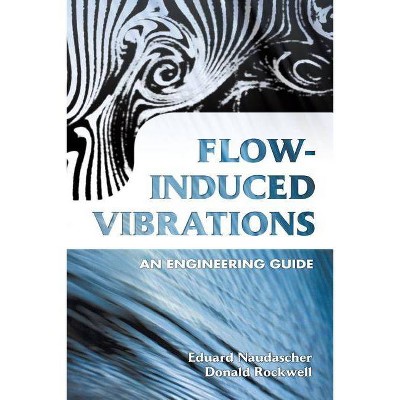Introduction to Mechanical Vibrations - by Ronald J Anderson (Hardcover)

Similar Products
Products of same category from the store
AllProduct info
<p/><br></br><p><b> Book Synopsis </b></p></br></br><p><b>An in-depth introduction to the foundations of vibrations for students of mechanical engineering</b></p> <p>For students pursuing their education in Mechanical Engineering, <i>An Introduction to Mechanical Vibrations</i> is a definitive resource. The text extensively covers foundational knowledge in the field and uses it to lead up to and include: finite elements, the inerter, Discrete Fourier Transforms, flow-induced vibrations, and self-excited oscillations in rail vehicles.</p> <p>The text aims to accomplish two things in a single, introductory, semester-length, course in vibrations. The primary goal is to present the basics of vibrations in a manner that promotes understanding and interest while building a foundation of knowledge in the field. The secondary goal is to give students a good understanding of two topics that are ubiquitous in today's engineering workplace - finite element analysis (FEA) and Discrete Fourier Transforms (the DFT- most often seen in the form of the Fast Fourier Transform or FFT). FEA and FFT software tools are readily available to both students and practicing engineers and they need to be used with understanding and a degree of caution. While these two subjects fit nicely into vibrations, this book presents them in a way that emphasizes understanding of the underlying principles so that students are aware of both the power and the limitations of the methods.</p> <p>In addition to covering all the topics that make up an introductory knowledge of vibrations, the book includes: </p> <p>● End of chapter exercises to help students review key topics and definitions</p> <p>● Access to sample data files, software, and animations via a dedicated website</p><p/><br></br><p><b> From the Back Cover </b></p></br></br><p><b>An in-depth introduction to the foundations of vibrations for students of mechanical engineering</b> <p>For students pursuing their education in Mechanical Engineering, <i>Introduction to Mechanical Vibrations</i> is a definitive resource. The text extensively covers foundational knowledge in the field and uses it to lead up to and include: finite elements, the inerter, Discrete Fourier Transforms, flow-induced vibrations, and self-excited oscillations in rail vehicles. <p>The text aims to accomplish two things in a single, introductory, semester-length, course in vibrations. The primary goal is to present the basics of vibrations in a manner that promotes understanding and interest while building a foundation of knowledge in the field. The secondary goal is to give students a good understanding of two topics that are ubiquitous in today's engineering workplace - finite element analysis (FEA) and Discrete Fourier Transforms (the DFT- most often seen in the form of the Fast Fourier Transform or FFT). FEA and FFT software tools are readily available to both students and practicing engineers and they need to be used with understanding and a degree of caution. While these two subjects fit nicely into vibrations, this book presents them in a way that emphasizes understanding of the underlying principles so that students are aware of both the power and the limitations of the methods. <p>In addition to covering all the topics that make up an introductory knowledge of vibrations, the book includes: <ul> <li>End of chapter exercises to help students review key topics and definitions</li> <li>Access to sample data files, software, and animations via a dedicated website</li> </ul><p/><br></br><p><b> About the Author </b></p></br></br><p><b>DR. RONALD J. ANDERSON</b> is a Professor in the Department of Mechanical and Materials Engineering, Queen's University at Kingston, Canada. He received his B.Sc.(Eng) from the University of Alberta in 1973, his M.Sc.(Eng) from Queen's University in 1974, and his Ph.D. from Queen's University in 1977. His doctoral research was in the field of road vehicle dynamics. From 1977 to 1979, he was a Defence Scientist with the Defence Research Establishment Atlantic where he was engaged in research on the dynamics of novel ships. From 1979 to 1981 he was Senior Dynamicist with the Urban Transportation Development Corporation where he worked on rail vehicle dynamics, particularly suspension design for steerable rail vehicles. He joined Queen's University in 1981 and, while conducting research into vehicle dynamics and multibody dynamics, has been teaching undergraduate courses on dynamics and vibrations and postgraduate courses on advanced dynamics and engineering analysis. Dr. Anderson has been the recipient of several departmental and faculty-wide teaching awards. He has also served the University in the academic administrative roles of Head of Department, Associate Dean (Research), and Dean of Graduate Studies.
Price History
Price Archive shows prices from various stores, lets you see history and find the cheapest. There is no actual sale on the website. For all support, inquiry and suggestion messagescommunication@pricearchive.us




















